Herpes: Why does herpes develop and how is it treated?
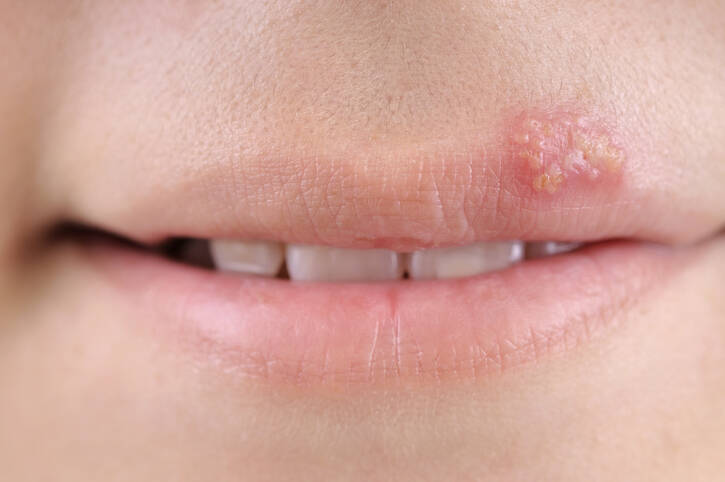
Herpes is an infectious disease caused by the herpes simplex virus. It is one of the most widespread viruses in the human population and affects up to 95% of people. It causes various diseases. Among harmless forms, oral herpes or cold sores is the most well-known.
Most common symptoms
- Sore Throat
- Pain when swallowing
- Increased body temperature
- Nausea
- Headache
- Bleeding gums
- Malaise
- Wetting of the skin
- The Island
- Blisters
- Buds
- Skin pain
- Itchy skin
- Fatigue
- Reddened skin
- Enlarged lymph nodes
Characteristics
Herpes is an infectious disease caused by herpesviruses. That is where the colloquial name of the disease, i.e. herpes, is derived from.
The family of Herpesviridae.
Herpesviruses are among the most widespread viruses in the world. They are DNA viruses further divided into several subspecies. The best known are the herpes simplex virus or the varicella zoster virus.
The herpes simplex virus (HSV) is further classified into the HSV-1 virus and the HSV-2 virus. They cause different problems. In this article, we will take a closer look at them.
The varicella zoster virus (VZV) causes a known disease predominantly in childhood, i.e. varicella, more commonly known as chickenpox.
Herpes simplex viruses affect up to 95% of the population.
As early as the 1st century, Herodotus described labial cold sores.
Genital herpes goes back to the 18th century.
Table: there are several types of herpesviruses
| Name | Description |
| Herpes simplex virus (HSV) |
|
| Varicella zoster virus (VZV) |
is the causal agent of
|
| Cytomegalovirus |
|
| Epstein-Barr virus |
|
| Human herpesviruses HHV-6, 7 and 8 |
|
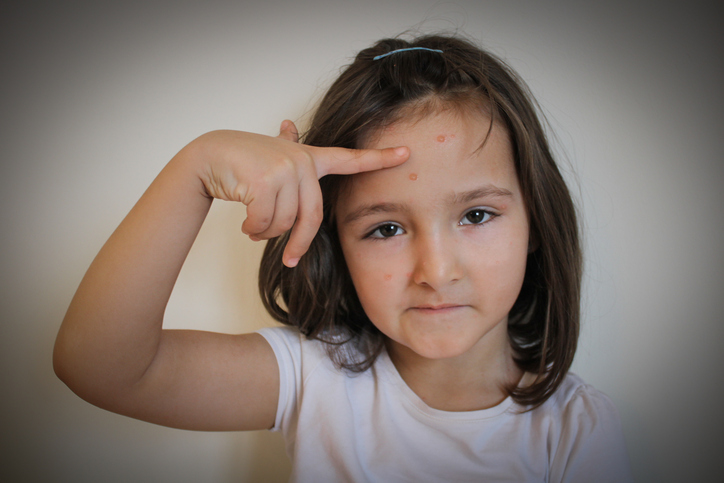
What is the herpes simplex virus?
In the human population, herpes simplex viruses are transmitted through contact. The other person is infected via bodily fluids, such as blood, saliva, tears, vaginal secretions or semen, as well as wound drainage or pus.
Skin-to-skin transmission is important in the sense that the virus is sensitive to the external environment which dries off relatively fast, thus destroying the virus.
The herpes simplex virus is divided into the HSV-1 and the HSV-2, whichis important to distinguish the problems they cause.
HSV-1 is mainly transmitted by oral-to-oral contact, i.e. via the mouth, or bodily fluids, such as infected saliva from person to person.
In HSV-2, sexual intercourse is the most common mode of transmission. Thus, infected body fluids, such as vaginal secretions or the ejaculate (semen).
Read also: the article What are the risks of having multiple sex partners?
Both of these viruses are widespread in the human population. They always cause pain, which, in most cases, has an unpleasant but insignificant impact on the individual's health in the form of cold sores or genital herpes.
Their recurrent outbreak is mainly attributed to a momentary weakening of immunity.
In more severe cases, they also cause more serious problems, such as herpetic encephalitis.
This virus can cause several diseases.
Some of those issues are:
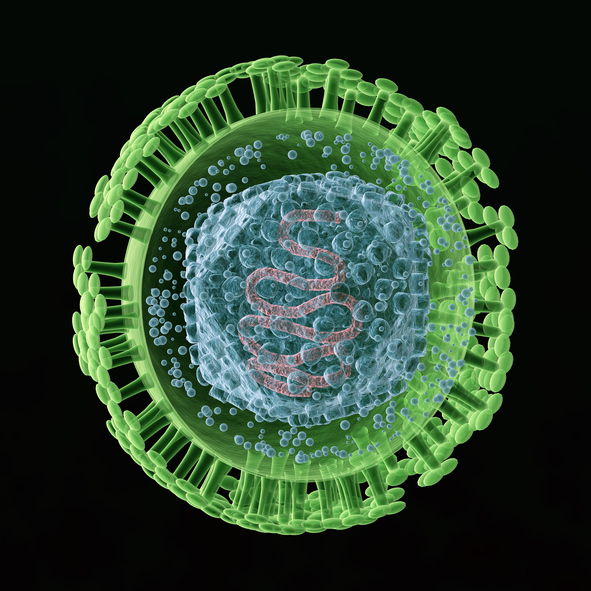
- skin infection
- infection of the lips and mucous membranes of the oral cavity
- eye infections
- central nervous system (CNS) infections
- genital problems
- neonatal infections, transmission during childbirth from mother to child, characterised by a very difficult course
The first contact with the virus occurs in early childhood, namely at the age of 4 months or later, most often up to 3 years of age.
This first contact with the virus is called a primary, or first-episode, infection. The primary infection is 99 percent asymptomatic, i.e. without symptoms.
Alternatively, it may manifest itself as gingivostomatitis, primary infection by genital herpes or as direct HSV inoculation. The most difficult form is the primary infection of a newborn.
Herpetic gingivostomatitis
This is a disease that presents with general symptoms, for example weakness, fatigue, and anorexia. The body temperature may become a fever. The patient may experience pain throughout the body, muscles as well as headaches.
General symptoms, often described as flu-like.
Sensations of a sore throat is also associated with enlargement of regional lymph nodes. The child may vomit, feel sick and complain of abdominal pain.
After a few days, the first stage recedes. This phase usually lasts 3 to 4 days and is referred to as the prodromal stage.
The second part of the disease is then characterized by small blisters in the oral cavity, especially on the hard palate, the tongue and the gums or at the base of the mouth.
Later on, the sores present as ulcers, which may be round or oval. They come in different sizes and may measure even up to 1 centimetre. The central part is covered with a yellowish to grayish coating, and the tongue is covered in a whitish coating.
The mouth and and its corners may also be affected.
They are accompanied by severe pain in the area of damaged mucous membranes due to the refusal of food and loss of appetite.
Primary infection of genital herpes
In most cases, it is the HSV-2 virus which is transmitted during puberty. Problems in the genital area may be associated.
Here is the latest information from the studies states:
Up to 50% of cases of genital herpes may be caused by HSV-1.
This rise is attached to a simple explanation:
the popularity of oral sex.
An outbreak of genital herpes is accompanied by general symptoms, such as increased body temperature or fever and weakness. Lymph nodes, which are also painful, are enlarged in certain regions.
In women, herpetic ulcers can affect practically the entire external and internal area of the female genitalia (vagina, cervix).
A few days after sexual intercourse, an outbreak occurs in the area of the inner labia, vaginal entrance or urethra.

In men, an outbreak occurs mainly in the area of the glans, i.e. the tip of the penis, but also in other places of the penis. If the virus is transmitted during anal intercourse, erosion, i.e. the damage to the skin, is occurs in the area of the anal orifice.
If this occurs in young children, sexual abuse would have to be taken into account as a possible cause.
Direct inoculation of HSV into the skin
The virus, i.e. Eczema herpeticum, is transmitted directly to damaged skin, but also to normal skin without injury, especially in people with weakened immunity.
This form presents with a dissemination of blisters which break open and form crusts, especially in the face, neck and underarms.
This type is also accompanied by general symptoms, mainly weakness, malaise, high fever, body aches and headaches.
Neonatal primary infection
It takes place through two transmission mechanisms.
First, during intrauterine development from mother to fetus through the placenta. It is often the cause of various intrauterine damage to the fetus. It also causes miscarriage, premature birth or stillbirth.
Transmission in this way is rare.
A neonatal primary infection is an infection of the newborn during labour through contaminated birth canals.
In most cases, it has a very difficult to fatal course. Problems in the newborn occur within about 2 weeks of birth.
General symptoms, including fever, are associated with a disseminated outbreak of herpetic skin damage on the face and inflammation due to eye herpes. There is also damage to the brain, lungs and liver.
Transmission from an infected mother to a child occurs in 40-60%.
Transmission can be prevented during childbirth during a C-section, i.e. a Caesarean section. It must take place a few days before the estimated due date and there can be no rupture of the amniotic sac, i.e. no outflow of amniotic fluid.
Prevention should be considered especially if expectant mothers:
- have overcome genital herpes
- have genital herpes during pregnancy
- are predicted to have it
- have been diagnosed with herpes simplex below waist level
- have had a sexual partner with genital herpes
Causes
The cause is an infection via bodily fluids containing the HSV virus. The transfer takes place through direct skin-to-skin contact. The virus is sensitive to the external environment, where it quickly dies.
As mentioned above, there are two subtypes of HSV.
HSV-1 is mainly responsible for facial problems, although recent studies also show its presence in oral and genital transmission.
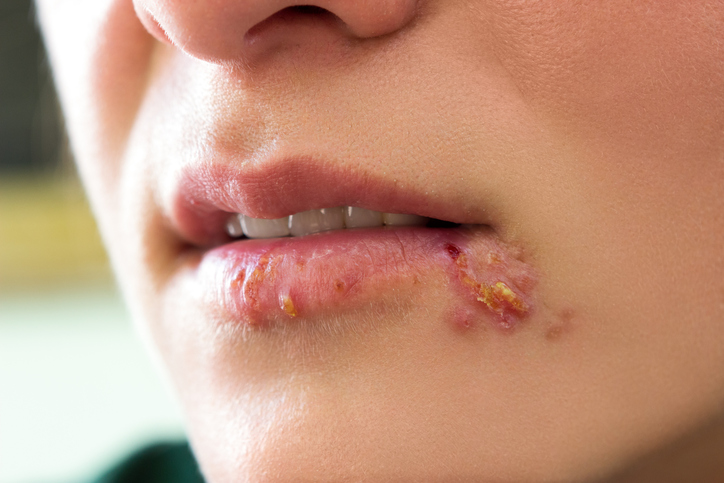
HSV-2 is characterized by occurrence in the lower parts of the body, below the waist. In most cases, it causes genital herpes. The cause of transmission is sexual intercourse.
HSVs, whether subtype 1 or 2, are common human pathogens that occur worldwide. In the vast majority of cases, they are unpleasant and painful, but there is little chance of it being life-threatening.
In rarer cases, the course may be worse and cause various difficulties throughout the body. The main reason is weakened immunity. In this case, the skin, eyes or brain may be affected. The most serious complication of herpes encephalitis or meningitis is death.
Symptoms
Herpetic diseases are largely asymptomatic during primary infection. Transmission occurs at an early age.
There is no cure for the virus. However, it is dormant in our body (in the skin and nerve cells, especially in the ganglia of the trigeminal nerve) and is waiting for the right time to cause trouble again.
Some cases when this might occur:
- when the body is weakened, e.g. in another disease
- for hormonal changes, during the menstrual cycle
- stressful situations and mental stress, overload
- postoperative conditions and other stress for the body
- too much sun exposure
The medical term for recurrent flares is recurrent herpes labialis (oral herpes, on the lips) or recurrent herpes genitalis (genitals).
Symptoms presenting during a recurrence of the disease include:
- in the area of an upcoming herpes flare-up, an individual experiences
- unpleasant itching
- sensations of tense, mucus
- stabbing sensations
- burning sensations
- swelling
- reddening
- pain
- subsequent small blisters/sores
- they are red
- painful
- itchy
- burn
- filled with fluid
- blisters/sores break open
- fluids are slowly discharged
- drying
- of the contents and erosion
- bleeding
- crusting
- cracked lips, skin, mucous membranes
- bleeding from scabs
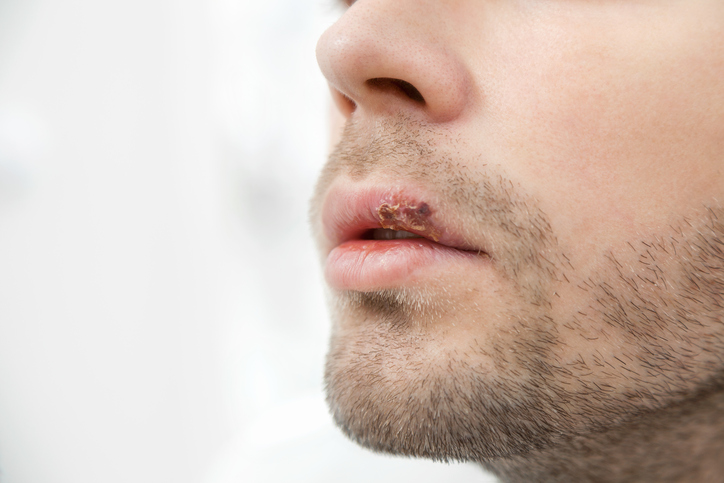
Skin manifestations may also occur elsewhere on the face, e.g. on the nose, in the nose, under the nose, on the neck, on the eye, in the eye, or on the chin.
In most cases, however, it appears on the lower lip.
In addition to these local signs, general symptoms may be associated, such as fatigue, nausea or elevated body temperature.
In rare cases, the virus may affect the oesophagus or cause inflammation of the lungs, liver, urinary tract or bladder.
Diagnostics
In order to diagnose the disease, no special medical examination methods are needed. The medical history and clinical picture are enough. A clinical picture consists of subjective and objective symptoms and signs.
Subjective problems are described by the patient, such as a feeling of tension, itching or pain. Objective signs are visible from the outside or can be examined.
In specific cases, it needs to be supplemented by laboratory tests such as virus evidence. This is after the previous episode of herpetic erosions or cultivation of the virus.
A Polymerase Chain Reaction (PCR) test is also performed. That means that the we can determine the specific antibodies in the blood serum based on the blood sample taken from the patient.
Course
The course can be diverse. For example, the initial infection with the virus, which usually occurs in childhood, is usually asymptomatic.
Of course, it also depends on the type of virus that has infected the body: HSV-1 in the facial area, especially the lips, or HSV-2 the form of the genital type.
The course of the disease may be mild or severe. It also depends on the current state of the body, immunity and associated diseases. The same goes for recurrent infections.
After the first contact, the virus hides in the body and waits for the opportunity to cause trouble again. The characteristic symptoms that the individual subtypes cause are listed above in the article.
Herpes during pregnancy
Pregnancy is a period that increases the demands on a woman's body. This applies to hormonal processes, immunity and fatigue.
These changes give herpes an advantage. If it is the Herpes virus of type 1, there is no need for concern. Oral herpes is not a risk to the fetus. Expectant mothers can help themselves with the usual products they can get at the pharmacy.
However, the situation changes when it comes to genital herpes.
In this case, it is important to inform the doctor or the gynecologist about genital herpes in the past.
The same applies to a first-episode infection during pregnancy. It does not represent a risk before the 28th week. There have been reports of transmission of the herpes virus to the fetus via the placenta, but only in rare cases.
The high risk of transmission from mother to fetus during childbirth is 30-50% in cases of primary infection.
An already existing disease during childbirth is more dangerous. At that time, it could also cause serious health problems for the fetus, or the newborn. Pregnant women are prescribed safe antiviral drugs.
That is why the C-section, i.e. Caesarean section, is the preferred method of delivery chosen before the due date. It is important to bypass the birth canal.
After childbirth, personal hygiene and prevention of transmission to the newborn are very important. The mother needs to be able to just hold back and not kiss the baby. Read the article on herpes and pregnancy.
Besides not kissing the baby, it is also necessary to avoid licking pacifiers, spoons and other objects that the baby has put in the mouth or on the skin.
Herpes manifests itself in pregnancy the same way it does otherwise, meaning cold sores are still painful and itchy. It is associated with fever, fatigue and other general problems such as pain in the body, muscles, joints, and headache.
Please note that oral herpes is the least dangerous form, while genital herpes is the most risky one, in which case there is a high risk for transmission and childbirth.
Young children - what we should keep in mind
Young children should not be kissed by a person with herpes, especially oral herpes. Be careful not to lick pacifiers or baby bottles in order to "clean" them.
When a child is playing with other children, it is impossible to prevent them from borrowing toys and putting them into their mouths or exchanging bottles, cutlery and other objects. Children tend to touch other children with their hands and then put their fingers into the mouth.
Therefore, let's not forget the principles of limiting the spread of infection among other children. If small children have cold sores, they should stay at home with the parent(s).
How it is treated: Herpes
Treatment of sores/herpes: is there a cure?
Show moreWhat does herpes look like and how does it manifest?
Herpes is treated by
Other names
Interesting resources










